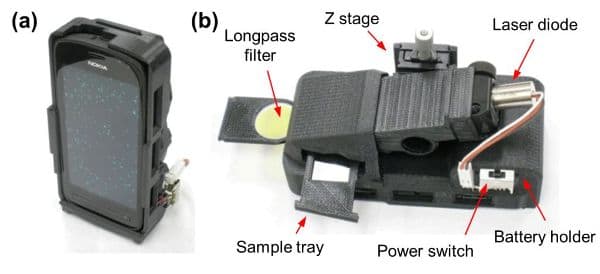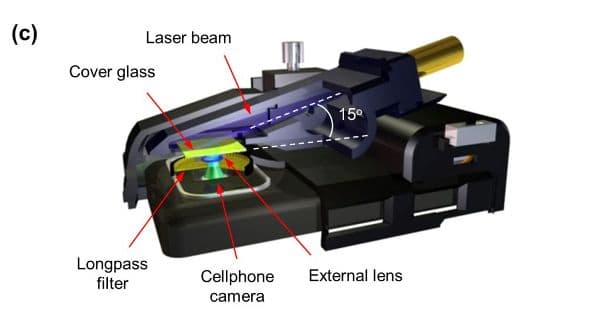UCLA’s Smartphone Microscope Captures Clear Images Of Objects As Tiny As A Single Virus
Smartphones have always continuously proven their mettle in every aspect of life. One of the most important and most used features on a smartphone is its camera. Mainstream makers continuously obsess on <a href="https://www.crazyengineers.com/threads/nokia-may-launch-41-megapixel-windows-phone-at-zoom-reinvented-event-on-july-11-2013.68593">Nokia May Launch 41 Megapixel Windows Phone At "Zoom Reinvented" Event On July 11, 2013</a>, <a href="https://www.crazyengineers.com/threads/samsung-galaxy-s5-camera-details-begin-to-leak.70282">Samsung Galaxy S5 Camera Details Begin To Leak</a> and <a href="https://www.crazyengineers.com/threads/acer-liquid-s2-has-4k-video-recording-wont-play-them-full-resolution.70413">Acer Liquid S2 has 4K Video Recording. Won't Play Them @ Full Resolution.</a>. Even if your smartphone’s lens is not up to the mark <a href="https://www.crazyengineers.com/threads/sony-espresson-attachable-camera-lens-for-smartphones-imaging-awesomeness-redefined.70294">SONY EspressOn Attachable Camera Lens For Smartphones- Imaging Awesomeness Redefined!</a> promise you DSLR quality images. While people have taken care of the “bigger picture†they have forgotten about the “tiny detailsâ€. UCLA Henry Samueli School of Engineering and Applied Science professor Aydogan Ozcan and his team have focused their efforts on the making a smartphone microscope module that can be used for detection of sub-wavelength objects like bacteria and viruses.
Ozcan’s project was particularly difficult as capturing images as tiny as a single virus or a nano-particle is almost impossible as the optical signal strength and contrast for these tiny objects are even lower than wavelength of light. In his experiment he used 3D printing to make the custom casing of the fluorescent microscope that would house a colour filter, an external lens and a laser diode. The diode was placed at an angle of 75 degrees as it would avoid the detection of scattered light which messes up the fluorescent image.

After attaching the device a smartphone’s camera module, the team was able to detect single human cytomegalovirus (HCMV) particles and nano-particles which were as small as 90-100 nanometres. To make sure that the microscope had done the job right, they compared the images shot by the smartphone with the images captured by scanning electron microscope and a photon-counting confocal microscope and were quite happy with the results.

Ozcan hopes his invention would find its way to underdeveloped countries where it could be used as a portable microscope for medical purposes.
Source: #-Link-Snipped-#
Ozcan’s project was particularly difficult as capturing images as tiny as a single virus or a nano-particle is almost impossible as the optical signal strength and contrast for these tiny objects are even lower than wavelength of light. In his experiment he used 3D printing to make the custom casing of the fluorescent microscope that would house a colour filter, an external lens and a laser diode. The diode was placed at an angle of 75 degrees as it would avoid the detection of scattered light which messes up the fluorescent image.

After attaching the device a smartphone’s camera module, the team was able to detect single human cytomegalovirus (HCMV) particles and nano-particles which were as small as 90-100 nanometres. To make sure that the microscope had done the job right, they compared the images shot by the smartphone with the images captured by scanning electron microscope and a photon-counting confocal microscope and were quite happy with the results.

Ozcan hopes his invention would find its way to underdeveloped countries where it could be used as a portable microscope for medical purposes.
Source: #-Link-Snipped-#
0
